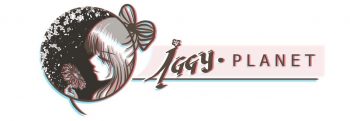Singapore might have one of the lowest fertility rates in Asia, but the region is still home to the biggest market for baby products in the world.
How Popular Are Baby Products in Asia?
The global demand for baby products has been growing over the years. In 2018, the market size was over $73 billion, according to Statistic. By 2019, it could grow to nearly $78 billion. By 2026, the value would already surpass the $100 billion mark.
Grand View Research keeps a positive outlook for the industry as well. Although its projections are more conservative, it forecasts the growth to be 5.5% compounded annually until 2025.
Of the many regions that now use a variety of baby products, the biggest is Asia-Pacific, including Singapore. According to Euromonitor International, this area accounted for the most substantial growth from 2011 to 2016. Within this period, it earned almost $2 billion.
What Drives Growth?
It’s a combination of many factors:
1. Population Growth
Over 55% of the world’s population currently lives in Asia, according to PRB. In 2016, the number of residents already reached over 4 billion. It also has the highest population growth rate. It increased by fourfold during the twentieth century, revealed the World Population Review.
Singapore might be struggling with natural births, but it also has one of the highest net migration rates at 13.1. Index Mundi ranks it at number five, beating its neighbouring Malaysia and Indonesia. It means more people prefer to call the city-state their new address. These numbers can further increase due to better work opportunities and a higher quality of living.
Euromonitor International also revealed that the region has the biggest population of children below 11 years old. These are the target market for most of the childcare products worldwide.
2. Accessibility to Organic Options
Parents are spending more on quality products, and in Singapore, it could mean organic ones. The location and economy of Singapore make organic goods accessible to its people. These include products such as Cherub Rubs Skin Balm, a clinically certified rub with high-quality essential oils that are safe for both mothers and babies.

Organic foods are popular as well. Fairprice, for example, expanded its products to over 800 from 600 back in 1998, according to a Straits Times report.
3. Higher Disposable Income
Singapore might be one of the expensive countries in the world, but it also has a high disposable income. BMI Research revealed that, on overage, households could have as much as US$122,300 of disposable income by 2022. It would then be a significant increase from less than US$101,000 in 2018.
From 2018 to 2022, household spending could also go up by nearly 7% each year, which means that consumers could shell out as much as US$174.5 billion by the end of the forecast period. By 2022, about 66% of the households would already reach the upper-income bracket, which would then be over ten percentage points higher than in 2018.
As parents become aware and gain access to more baby products, their spending on these items will only continue to grow. Asia, though, has a distinct advantage. Singapore, for example, can count on better income, more organic options, strong net migration, and, hopefully, a higher fertility rate in the future.

